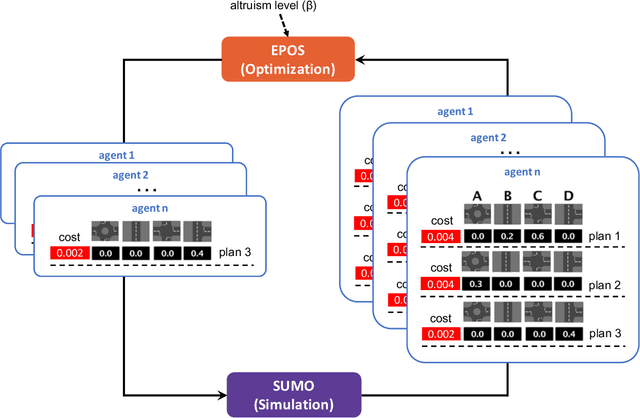Decentralized Optimization of Vehicle Route Planning -- A Cross-City Comparative Study
Paper and Code
Jan 10, 2020



New mobility concepts are at the forefront of research and innovation in smart cities. The introduction of connected and autonomous vehicles enables new possibilities in vehicle routing. Specifically, knowing the origin and destination of each agent in the network can allow for real-time routing of the vehicles to optimize network performance. However, this relies on individual vehicles being "altruistic" i.e., being willing to accept an alternative non-preferred route in order to achieve a network-level performance goal. In this work, we conduct a study to compare different levels of agent altruism and the resulting effect on the network-level traffic performance. Specifically, this study compares the effects of different underlying urban structures on the overall network performance, and investigates which characteristics of the network make it possible to realize routing improvements using a decentralized optimization router. The main finding is that, with increased vehicle altruism, it is possible to balance traffic flow among the links of the network. We show evidence that the decentralized optimization router is more effective with networks of high load while we study the influence of cities characteristics, in particular: networks with a higher number of nodes (intersections) or edges (roads) per unit area allow for more possible alternate routes, and thus higher potential to improve network performance.
 Add to Chrome
Add to Chrome Add to Firefox
Add to Firefox Add to Edge
Add to Edge